Who we are
The Institute of Geosciences and Earth Resources (IGG), is an institute of National Research Council of Italy (CNR), and it is devoted to the interdisciplinary study of the Geosciences, including application-oriented approaches.
Top News
-
 Read more
Read moreNasce a Pianosa una nuova sala divulgativa – La scienza si apre al pubblico!
Il 5 giugno, all’interno della Base di Ricerca Pianosa (BRP-CNR), sarà inaugurato un nuovo spazio dedicato alla divulgazione scientifica. Nei locali…
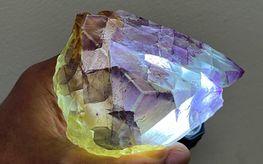 Read more
Read moreConvegno “MATERIE PRIME CRITICHE PER L'ENERGIA”
L'Accademia Nazionale dei Lincei e la Fondazione "Guido Donegani", nell'ambito dei Convegni Lincei su "Il Futuro dell'Umanità", hanno organizzato…
 Read more
Read moreITINERIS - Project Final Meeting
The ITINERIS final meeting will take place on September 25-26 at the CNR Sala Convegni in Rome. This gathering will be a key opportunity to celebrate…
CARE-ON
CARE-ON (Can We Rely on our Network?) is a research project conducted and funded by the Institute of Geosciences and Earth Resources of the Italian National Research Council (IGG – CNR). Its main goal is to investigate the variability related to human error in the manual counting of boulders and craters from images of extraterrestrial surfaces.
Although machine learning algorithms have advanced in automating these tasks, human capabilities in image identification and interpretation remain essential for their training, accuracy control, and result validation. Manual methods, on the other hand, inevitably introduce a component of variability, due to different individual sensitivities, fatigue, and the observer’s competence/experience.
CARE-ON aims to explore and mitigate such uncertainties by assessing the impact of human factors in this process and developing guidelines that maximize reliability and accuracy in identification.
VENUS
The VENUS (ConVErting marginal lands of the Mediterranean basin into productive and sustainable agroecosystems using low water demanding Neglected and Underutilized Species) project aims to demonstrate the environmental and economic potential of Neglected and Underutilized Species (NUS), which require low water and are adapted to arid and saline soils. By promoting the use of NUS, the project seeks to convert marginal lands into productive areas, improving soil quality and avoiding conflicts over water resources. Additionally, VENUS aims to raise awareness among farmers, consumers, and markets about the benefits of these resilient species.

SWAMrisk
The SWAMrisk (Subsurface WAter monitoring and Management to prevent drought risk in coastal systems) project aims to enhance knowledge of climate change impacts on coastal aquifer systems in the Veneto and Neretva regions of Italy and Croatia. This aligns with the specific objective 2.1 of the Priority Program: “Promoting climate change adaptation and disaster risk prevention, resilience, taking into account ecosystem-based approaches.”
NHEAT
The NHEAT (Natural Hydrogen for Energy trAnsiTion) project aims to stimulate and direct hydrogen research in Italy, which is still underdeveloped and poorly conceptualized. Our challenge is to investigate, using a multidisciplinary geological-structural, petrological and geochemical approach, the processes that generated natural H2 in promising Italian areas that could reveal the presence of H2 at depth or on the surface: serpentinite-dominated systems and volcanic/magmatic hydrothermal systems.
The NHEAT project is led by the Institute of Geosciences and Earth Resources (IGG) of the National Research Council (CNR) in collaboration with the Institute of Environmental Geology and Geoengineering (IGAG-CNR), the Department of Earth Sciences of La Sapienza University of Rome and the National Institute of Geophysics and Volcanology (INGV), Palermo section.
STORECO2
The STORECO2 (Advancing the STORagE of Anthropogenic CO2 Emissions by Understanding Natural Carbonation Systems) project explores the natural mechanisms through which CO2 is converted into carbonate minerals, with a particular focus on the genesis of magnesite deposits. This research aims to establish a solid scientific foundation for the upscaling of CO2 mineral sequestration, considered essential to achieve net-zero emissions by 2050. Supported by the European Union as part of the Next Generation EU initiative and by the Italian Ministry of University and Research (PNRR program), the project lays the groundwork in research for the decarbonization of society towards a more sustainable future.
IRGIE
The IRGIE project (Inventory of the Geothermal Resources of the Aeolian Islands) is the result of a synergy between the National Institute of Geophysics and Volcanology (INGV) and the Sicilian Region. Its objective is to facilitate the sustainable energy autonomy of the islands of the Aeolian archipelago, with particular regard to geothermal energy. The purpose of the research is to investigate in detail the geothermal potential of the Aeolian Islands for the utilisation of the resource in the low, medium and high temperature range.
STONE
The STONE project (A new generation Spectroscopy Tool to monitor rheology and phase transformation prOcesses in volcaNology and cEramic production) is a PRIN Project 2022, funded by the European Union – NextGenerationEU.
RESTORE
The RESTORE project (REconstruct subsurface heterogeneities and quantify Sediment needs TO improve the REsilience of Venice saltmarshes) is a PRIN 2022 PNRR Project, Funded by the European Union – NextGenerationEU.
EUREECA
The EUREECA project (PRIN2022Y4J7AN) is funded by the European Union – NextGenerationEU and by the Italian Ministry of University and Research.
WINTER CZ
The WINTER CZ project (Winter Critical Zone dynamics in the High Arctic: measuring carbon fluxes and geo-biological processes at the Bayelva Critical Zone Observatory during winter) is a project funded by the Arctic Research Program (PRA) INFRA 2021.
Bilateral Italy – Argentina
The Bilateral Project Italy – Argentina is a bilateral agreement between Consiglio Nazionale delle Ricerche (CNR) and Consejo Nacional de Investigaciones Científicas y Técnicas (CONICET). The objective of the project is to analyze the influence of marine and continental water exchanges on the shallow marine habitats of the Valdés Peninsula and the Venetian coastal system (Adriatic Sea).
InGEO
The InGEO project is funded by the European Union – NextGenerationEU and by the Italian Ministry of University and Research, PNRR programme. This research project responds to the needs of increasing the share of energy produced from renewable sources, improving knowledge of geothermal resources and the energy they contain for various uses.
NatResPoNΔ
The NatResPoNΔ project is funded by the European Union – NextGenerationEU and by the Italian Ministry of University and Research, PNRR programme. This research project aims to test the feasibility of nature-based solutions to increase the resilience of the Po River Delta - the main deltaic system in Italy and one of the most important worldwide - to relative sea-level rise, ultimately mitigating long-term flood and storm-surge risks and ensuring the sustainability of communities on the delta.
MIGRATE
The MIGRATE project is a project funded by the Swiss National Science Foundation (SNSF). The goal of MIGRATE is to streamline passive seismic exploration procedures by developing new analysis methods that remove human bias, have significantly increased reproducibility and reliability, while addressing relevant scientific questions.
GEOTHERM-FORA
The GEOTHERM-FORA project is a European Project funded by the Horizon Europe Programme (G.A. 101075400), which aims at supporting and strengthening the fora on geothermal systems dealing with research and innovation. The Deep Geothermal Implementation Working Group (DG-IWG) and the Platform on Deep Geothermal (ETIP-DG) are working together and interlinked.
DEEPU
DeepU project (Deep U-tube heat exchanger breakthrough: combining laser and cryogenics gas for geothermal energy exploitation) has been funded under the EIC Pathfinder programme (G.A. 101046937) by the European Commission as part of Horizon Europe, which supports early-stage projects developing revolutionary, high-risk/high-gain technologies with the potential to create new markets and address global changes.
SECURE
SeCure (Saltwater intrusion and climate change: monitoring, countermeasures and informed governance), which is allocated in the Cluster Adaptation to climate changes "governance and capacity building", is aimed to (i) maximize the main outcomes and the experiences developed in MAC IT-HR projects and the synergies between the projects to enhance visibility and transferability, and (ii) fully exploit and consolidate the results achieved so far to further increase the knowledge base on the saltwater contamination of the northern Adriatic coastlands in preparation for the next programming period, in particular Specific objective 2.4.
HYDRO-ISLAND
HYDRO-ISLAND (Pianosa Island: hydrological processes and water resources sustainability in a climate-changing Mediterranean) is carried out by through a cooperation among IGG, scientific leader, Tuscan Archipelago National Park, promoter of the project as responsible of Tuscan Islands Biosphere Reserve - MAB UNESCO, Earth Science Departments of the Siena and Pisa University (DSFTA-UniSi and DST-UniPi, respectively), GASP Museum and Turismo Sostenibile s.r.l. Furthermore, the Autorità Idrica Toscana (AIT) will represent a key stakeholder.
ABRESO
ABRESO (ABandonment and REbound: SOcietal views on landscape- and land-use change and their impacts on water and soils) is a Belmont Forum project funded by the Department of Earth Sciences and Technologies for the Environment (DSTTA). The project aims to create a transdisciplinary platform to understand the natural and socio-economic factors that lead to land abandonment and subsequent land use change and alteration of ecosystem processes in the Critical Zone. The results of the activities carried out over the 3 years of the project (2021-2023) will enable stakeholders to apply solutions for sustainable management of the air-soil-vegetation-water system.
ICEtoFLUX
ICEtoFLUX (HydrologIcal changes in ArctiC Environments and water-driven biogeochemical) focus on hydrological processes occurring in arctic environment, as well as on their effects of physical, chemical and biological type. It is developed over the Bayelva River catchment (Ny- Ålesund, Svalbard), starting from its glaciers (Austre- e Vestre-broggerbreen) and moving down to proglacial tundra area and the Kongsfjorden, in which water quality and current are affected by the river input of meltwater containing suspended solids.
LEAP-RE
LEAP-RE (Long-Term Joint EU-AU Research and Innovation Partnership on Renewable Energy) is Horizon 2020 EU-funded project, in response to the LC-SC3-JA-5-2020 H2020 call for proposal. The duration of the action will be 63 months as of 1 October 2020 (‘starting date of the action’).
LEAP-RE seeks to create a long-term partnership of African and European stakeholders in the field of renewable energy.
PON-GRINT
Il progetto PON “Infrastruttura di Ricerca Italiana per le Geoscienze” (Geoscience Research INfracstructure of ITaly; GRINT) ha come obiettivo generale quello di potenziare le strutture, le risorse e i servizi collegati al piano di implementazione dell’Infrastruttura di Ricerca (IR) Europea European Plate Observing System (EPOS) e di definire possibili ampliamenti dell’offerta di dati, prodotti e servizi, con particolare riferimento alle regioni meno sviluppate (Campania, Calabria, Puglia e Sicilia) o in transizione (Abruzzo, Molise e Sardegna).
AL.C.h.E.Mi.S.T.
The Project regards the integrated study of Albanian speleothem, with the general aims to explore and develop the potential of Albanian caves as archives of past climatic and environmental variations, and with the perspective of properly valorise their scientific, didactic and historical value.
Bilateral Project Italy - Morocco
The bilateral project aims to study the main fault systems of the High Atlas in Morocco, whose long history of activation in different geodynamic contexts characterized the overall evolution of the mountain belt. The Atlas orogen resulted from a long history of reactivations in alternating transtensional–transpressional tectonic regimes of lithospheric faults (Tizi n'Test fault system in the western High Atlas, South Meseta and South Atlas fault systems in the central High Atlas).
HIETE
The purpose of the "Scientific Research of Excellence", funded by the CARIPARO Foundation, is to support innovative research projects that help generate positive economic and social effects, promoting the advancement of scientific knowledge in the most diverse fields.
One of the most debated scientific aspects in relation to the impacts of global changes is whether, how and for how long transitional coastal environments such as lagoons, estuaries and deltas will be able to survive the expected Sea Level Rise (SLR).
BRIC-INAIL Asbestos Call
The project “Crystallochemical characterization and study of surface reactivity of mineral fibres of environmental and health interest, for an accurate hazard analysis”, was financed in the frame of the “Bric” research funding program of INAIL - the Italian National Institute for Insurance against Accidents at Work.
ORMA
The ORMA Project, funded by the Region of Tuscany with Executive Decree no. 7426 of 14/05/2020 and started on December 1, 2020, aims to train experts to support innovation, technology transfer, promotion of the relationship between research and business and europlanning and to strengthen the skills of the territory in the field of research/enterprise integration, internationalization, technology transfer, culture of innovation, monitoring and forecasting of technologies and europlanning.
Bilateral project Italy - China
Deltas, estuaries, lagoons form complex and highly fragile transition zones between river dominated lowlands and coastal marine systems. Such systems have proven to react sensitively to climate change and anthropogenic forces: the present morpho- hydro- geological setting and ecosystem of coastal systems result from human-induced processes superposed to the natural coastal zone evolution.
TRETAMARA
In the northern Adriatic Sea there are marine and coastal habitats that favor and support a significant animal and plant biodiversity, represented by the geo-biogenic outcrops of Friuli Venezia Giulia and Veneto, by the Cladocora caespitosa dead corallites on the Slovenian side, by the numerous coastal-littoral ZSC-ZPS.
MoST
Project coordinator: Prof. Paolo Salandin University of Padova, Department ICEA ();CNR Scientific Responsible: Dr. Luigi Tosi, CNR-IGG (luigi.tosi@igg.cnr.it)
ASTERIS
Project coordinator: Prof. Simone Galeotti, Università degli studi di Urbino “Carlo Bo”; CNR Scientific Responsible: Dr.ssa Barbara Nisi, CNR-IGG (barbara.nisi@igg.cnr.it)
GECO
The project aims to study and develop, at industrial level, the production of geothermal energy with zero emissions. Geothermal fluids can naturally contain small variable amounts of CO2 and H2S that, if released into the atmosphere, can contribute negatively to the climate change.
Venezia 2021
The loss of land elevation with respect to the mean sea level (relative sea level rise – RSLR) is one of the processes potentially more impacting flat low-lying coastlands. Today, a continuous updating of the knowledge on land subsidence is becoming even more necessary. This holds in particular for the Venice area where land subsidence is characterized by a significant variability because of the hydro-geo-morphological complexity typical of this transitional environment. Although land subsidence in the Venice coast does not peak to values recorded in other coastal areas worldwide, the process is here severely threatening the territory because of its very low elevation, which is generally below the mean sea level, and the peculiarity of the lagoon environment.
IGCP 663 - IM2LSC
Land subsidence severely threatens most of the coastal plains around the world where high productive industrial and agricultural activities and urban centers are concentrated. Coastal subsidence damages infrastructures and exacerbates the effect of the sea‐level rise at regional scale. Although it is a well‐known process,
GEOENVI
CNR Scientific Responsible: Dr. Adele Manzella, CNR-IGG (adele.manzella@igg.cnr.it). Link to project web site: https://www.geoenvi.eu/.




























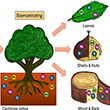


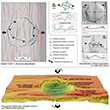




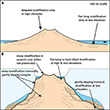

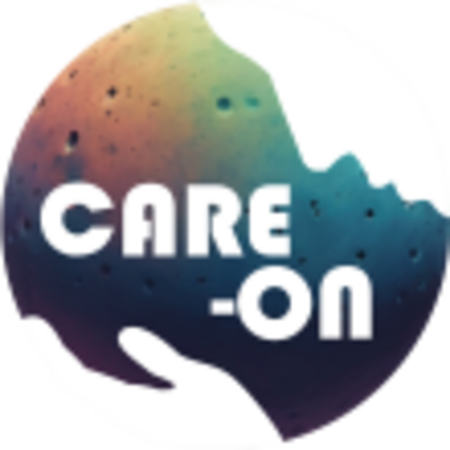






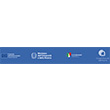





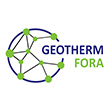







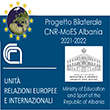











![[Translate to English:] VIOLA](/fileadmin/igg/progetti/logo_POR_small.jpg)
![[Translate to English:] GEOENVI [Translate to English:] GEOENVI](/fileadmin/igg/progetti/GEOENVI_small.jpg)